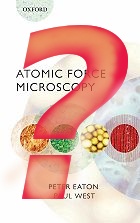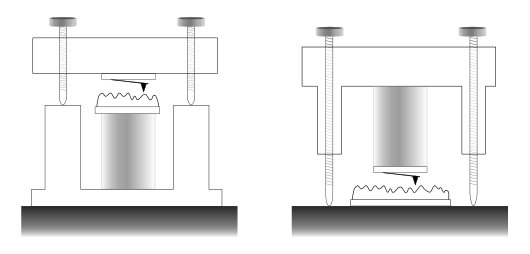 I am adding quizzes based on each chapter, to enable a self-test check after you've read it, or to help in using the book in a course.
I am adding quizzes based on each chapter, to enable a self-test check after you've read it, or to help in using the book in a course.
The first quiz was a short one based on Chapter 1. Here's the quiz for chapter 2. Chapter 2 is all about AFM instruments. It describes how they are built, and why they are built that way. It details the function of each component in an AFM, and also describe AFM probes in detail. There are section on the AFM, stage, electronics, software, cantilevers and probes, the instrument environment, and the sample cell. This chapter is useful if you use AFM, since you can use the instrument better when you know how it works.
Chapter 2
Short Questions
1. What is a typical expansion coefficient for a single piezo electric device? What voltage would need to be applied to make it expand 50 nm?
2. How does the feedback system in an AFM keep the probe-sample force constant?
3. What do you call the two classes of techniques used to correct for nonlinearity in piezo-electric scanners?
4. What is the purpose of piezo-electric displacement sensors?
5. Name three types of piezo-electric displacement sensors.
6. Name four types of force sensors. Which is the most widely used?
7. How does the “woodpecker” approach mechanism work? Why is it important?
8. Why should the mechanical loop in an AFM be very small?
9. Name four things the AFM electronics are required for?
10. What do P, I and D stand for?
11. What modes are v-shaped and beam-shaped lever usually used for?
12. What is the effect of using a blunt probe to image a pit in a surface?
13. What is the purpose of probe shape deconvolution?
14. Long Question
How does the optical lever in a typical AFM work? Why is it important to the sensitivity of the AFM?
15. Picture Question
In the picture below, show which is the probe scanning instrument, and which is the sample scanning one? Use arrows to show which parts of the two instruments scan back and forth. Label the probe, sample, and piezoelectric elements.
In order to get sample answers, click This email address is being protected from spambots. You need JavaScript enabled to view it.. If you plan to use this as a part of a course, I'd appreciate it if you'd let me know how it's being used. Use the Contacts link to contact me.

